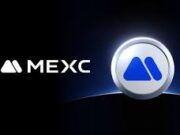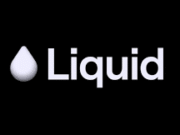In a move that blends high finance with luxury lifestyle, Daiwa Securities Group’s subsidiary Fintertech Corporation is now offering loans backed by digital assets — enabling clients to use holdings of Bitcoin (BTC) or Ethereum (ETH) as collateral to acquire yachts or private jets. This unique offering “livens up” the notion of crypto-wealth in a tangible, liquid-asset way, while pushing deeper into the luxury consumption market. According to reports, this service launched nationwide at Daiwa’s branches in Japan starting October 1, 2025. (ChainCatcher)
Let’s unpack what this means, how it works, and what implications it might have for the worlds of crypto, finance and luxury.
What’s the Offer?
Here are the headline details of the loan product being offered:
- Clients can pledge BTC or ETH as collateral instead of cash or more traditional assets. (Edgen)
- In the first year, the annual interest rate ranges from 0% to 3%. (Bitget)
- From year two onwards, the interest becomes 3.2% to 6% annually. (Edgen)
- Maximum loan amount: ¥500 million Japanese yen. (Bitget)
- Collateral ratio: 40%, meaning clients must pledge crypto worth (at least) more than the amount they borrow (roughly 2.5 × the loan value in collateral) or at least keep the collateral value relative to loan value at that ratio. (Edgen)
- The service begins October 1, 2025 across Daiwa’s branches. (Bitget)
In effect, if you hold a decent amount of BTC or ETH, you could borrow large sums—think high-end yacht or private jet purchase—without needing to sell your crypto holdings right away. The crypto acts as collateral.
What’s at Stake Here
There are several layers to why this is an intriguing development — for crypto holders, traditional lenders, luxury markets and regulation alike.
1. Crypto Utilities Evolve
Until now, many crypto holders either sold their crypto to raise cash for luxury purchases (which may trigger tax events) or simply held assets. By pledging crypto as collateral, they can keep exposure to upside while accessing liquidity. This bridging of “digital asset → real-world purchase” is notable.
2. Traditional Finance Embraces Crypto Collateral
That Daiwa Securities (a long-standing traditional securities firm in Japan) is offering this kind of product signals growing institutional comfort with crypto as a form of collateral. It’s a shift from crypto being just speculative to crypto being functional in high-value transactions.
3. Luxury Consumption Meets Crypto Lifestyle
For the luxury buyer—whether yacht, jet or other high-end purchase—the idea of using digital assets as backing adds a new flavor of status and financial creativity. The luxury market is indeed evolving: some private-jet or yacht services accept crypto payments. (AFR) This offering by Fintertech deepens that trend.
4. Tax & Liquidity Implications
By not selling the crypto, the borrower may avoid realizing a capital gain event immediately (depending on the jurisdiction). They gain liquidity while potentially benefiting from future appreciation of their crypto. On the flip side, the lender (Daiwa/Fintertech) has to manage crypto-price volatility risk and collateral management, which is non-trivial.
How It Works: A Walk-through
Let’s break down a “mock” scenario to understand the mechanics:
- You hold, say, 100 BTC (or equivalent ETH holdings). You do not want to sell since you believe the price will rise.
- You approach Daiwa/Fintertech and say: “I want to buy a luxury yacht costing ¥200 million.”
- Daiwa says: With a 40% collateral ratio, you must pledge crypto equivalent to at least ¥200 million * ÷ 0.4 = ~¥500 million worth of crypto (i.e., you pledge ~¥500 million value in BTC/ETH).
- You borrow the ¥200 million at first‐year rate of let’s say 1.5% (in the 0-3% range).
- You enjoy your yacht. You keep holding your crypto.
- In year two, your interest rate jumps to, say, 4% (in the 3.2-6% range). You continue repaying as structured by Daiwa.
- If the crypto value falls significantly (below collateral adequacy threshold), Daiwa likely has margin/rehypothecation risk and may require additional collateral or initiate liquidation of collateral.
This makes it a vibrant example of “crypto meets real asset financing”.
Benefits & Risks: Balanced View
✅ The Benefits
- Liquidity without selling: You can keep crypto exposure while gaining access to capital.
- Lower first-year interest: 0-3% is relatively low, especially for large loans.
- High loan ceiling: ¥500 million gives significant purchasing power.
- Luxury asset integration: Enables crypto holders to participate in luxury asset markets in new ways.
⚠️ The Risks
- Price volatility of collateral: Crypto prices swing; if collateral value drops, margin calls/liquidation are possible.
- Interest rate risk: After first year, rates rise to 3.2-6%. Over many years that can add up.
- Regulatory/tax risk: Depending on jurisdiction, pledging crypto might trigger tax, and sale of collateral may have implications.
- Asset illiquidity: While you hold luxury asset (jet/yacht), your effective leverage is high, and you’re exposed to upkeep, depreciation, regulatory and insurance burdens.
- Credit and operational risk: If the lender mismanages collateral or the borrower fails, there is risk.
Context & Trend: Luxury + Crypto = New Space
It’s worth placing this in broader context. The luxury consumption sector—yachts, private jets, high‐end real estate—is increasingly intersecting with crypto. According to reporting, luxury travel and private jet/yacht services are beginning to accept crypto payments to target crypto-wealthy customers. (AFR)
Similarly, crypto collateral lending is growing: more crypto-native platforms allow borrowing against crypto, allowing users to stay invested in the asset. What’s different here is a mainstream securities firm offering a luxury-asset loan backed by crypto. It’s not just financing crypto purchases; it’s using crypto to purchase something else.
This type of product may foreshadow a broader class of “real world asset financing via digital asset collateral” in Japan and elsewhere.
For Potential Borrowers: Questions to Ask
If you’re the kind of person holding crypto and exploring this kind of loan, here are questions to ask before proceeding:
- What is the exact collateral valuation methodology? How often is it marked‐to‐market?
- What happens if collateral value falls below threshold? What is the margin call policy or liquidation policy?
- Are there additional fees (origination, maintenance, insurance) associated with the yacht/jet? Remember luxury assets have high upkeep.
- What are tax implications in your jurisdiction—not only on the loan but on potential liquidation of crypto collateral?
- Is the interest rate fixed, variable, are there prepayment penalties?
- What happens to the luxury asset if you default? What rights does the lender have?
- Is the luxury asset held in your name outright, or is there recourse to the pledged crypto asset?
- How does the insurance, registration, regulatory compliance of the luxury asset interplay with the loan structure?
Effects on the Market and Crypto Landscape
This launch by Fintertech and Daiwa signals several things:
- Legitimisation of crypto collateral: Crypto increasingly accepted by traditional lenders as legitimate collateral.
- Blurring of asset categories: Digital assets are no longer only traded; they’re being leveraged for real‐world purchases.
- Luxury asset market innovation: High-net-worth individuals with crypto holdings gain new options for financing luxury.
- Potential increase in systemic risk: As more lenders accept crypto collateral, concerns around crypto volatility, contagion and margin-call cascades may increase.
- Regulatory spotlight: Such services put crypto collateral, high‐value asset lending and tax/AML frameworks in focus. Regulators may ask: when does borrowing against crypto become a securities or credit product?
In sum, while the product is niche (luxury yacht/jet financing is not mainstream), the concept could scale into other asset classes: real estate, luxury cars, art, even business financing. The underwriting of crypto collateral is the bigger story.
In Ending
If you’re a crypto-asset holder sitting on gains and wondering how best to use that capital without selling and triggering tax or missing future upside, this kind of product is attractive. It offers a path to liquidity and staying in the asset. But it’s not free of risk—and the luxury asset component adds layers.
With interest rates rising after year one, collateral volatility potentially biting, and luxury asset maintenance costs lurking, this loan is a tool that must be used with awareness.
However, as a signal, it’s strong: a major Japanese securities firm is integrating crypto collateral, bridging the digital and physical wealth worlds. And for those in the high-net-worth/crypto-rich segment, yachts and jets might now be just one click away—without selling the crypto.
If you’d like, I can dig deeper into how the collateral valuation works, or explore comparable crypto-backed loan products globally.
Sources:
- ChainCatcher: “Daiwa Securities subsidiary Fintertech launches Bitcoin-backed yacht purchase loan service.” (ChainCatcher)
- Bitget News: “Fintertech, a subsidiary of Daiwa Securities, launches bitcoin-backed yacht purchase loan service.” (Bitget)
- Edgen Tech: “Daiwa Subsidiary Fintertech Launches Bitcoin, Ethereum-Backed Loans for Luxury Purchases.” (Edgen)
- CoinPost: “Daiwa Securities Introduces Digital Asset-Backed Loan Service Nationwide.” (CoinPost Terminal)
- AFR: “Luxury yachts, private jets. Bitcoin bros are having a moment.” (AFR)



























